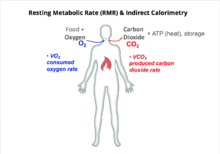
The Economics of Energy Prices and Customer Incentives
With the end goal of this concise, “value reaction” signifies the adjustment in client energy utilization as the cost of energy supply changes. From an approach producer’s perspective, it is critical to comprehend the financial hypothesis behind value reaction, which is the idea of value flexibility. Pulse Power plans are essential when you do different work from others. Value versatility depends on the idea that utilization of a decent or administration is versatile, or alterable, and that utilization will in general change contrarily to changes in cost— more exorbitant costs cause utilization to drop, and the other way around. While the overall hypothesis of value flexibility is grounded, applying it to explicit rate-making/evaluating approaches requires certifiable experience and powerful estimation strategies that strategy producers can utilize. To bring hypothesis into compelling practice, examination and discussion proceed on the extent of versatility impacts, the contrasts between the present moment and long-term versatility, and related issues.

Estimating versatility includes various strategies, contingent upon the system of investigation
Long-term, economy-wide investigations ordinarily analyze flexibility over periods up to 10 to 30 a long time. Transient flexibility impacts are assessed all the more barely, now and then only for a time of hours or less when a specific value signal is essential. Power rates that change by the season of day and burden the executive’s programs can make momentary flexibility impacts, however, assessing supported impacts on energy use over a multi-year premise is more troublesome. For instance, drawn-out value flexibility might be communicated regarding “- 0.15,” which implies that for each 10% increment in power costs in such periods, use would be expected to fall by 1.5 percent. Transient flexibilities are frequently estimated as hourly pinnacle requests or energy use decreases and are not reliably estimated as changes in yearly energy use. In projects that empower transient value reaction, starting hourly interest decreases can decay over resulting hours or days, having longer-term utilization effects particularly hard to predict. Price reaction, regardless of whether a present moment or long haul, likewise shifts by client class and end-use. More modest clients, like homes and independent ventures, are ordinarily seen as less cost responsive generally speaking than bigger business and modern clients, even though giving private clients with empowering advances and projects can limit this hole (see Sachs, 2007).
Contrasts can be credited to a few variables, including the follows
Capacity to focus on energy cost control and put resources into the staff, checking capacities, and burden the executive’s abilities expected to make critical cost responsive changes in energy use. Shifting levels of value straightforwardness clients’ capacity to see and get cost furthermore, rate data, in a period and organization that empowers them to make cost reaction choices. Clients need to get used and cost data that permits them to interface their energy use choices with the subsequent expense impacts. Accessibility of specialized alternatives to oversee energy use, for example, subbing the kind of energy utilized, moving working hours, or changing cycles to react to cost signals. Inelasticity when energy is utilized to offer fundamental assistance. Extra industrious market boundaries to energy effectiveness across client types. This conversation recommends that for rate-making purposes, it could be generally helpful to appraise cost versatility by client type and area. Confined investigation can decide the greatness of value signals related to nearby utility framework costs: in certain locales, on-top energy is a lot more costly contrasted and off-top energy than in different zones. Client end-utilizes and their overall significance additionally shift topographically; for instance, clients in certain environments may show various resilience’s for comfort impacts related to changing cooling settings than clients in different environments.
